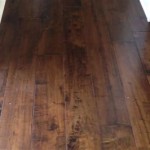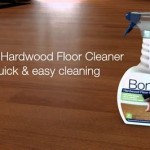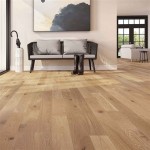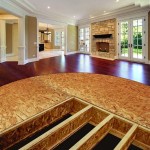Wax Stick for Wood Floor Repair: A Comprehensive Guide
Wood floors, while aesthetically appealing and durable, are susceptible to damage over time. Scratches, dents, and gouges can detract from the beauty and value of a wood floor. While professional refinishing is an option, it can be costly and disruptive. A cost-effective and relatively simple solution for minor wood floor damage is the use of wax sticks. These sticks, available in a variety of wood tones, are designed to fill in imperfections and restore the appearance of the floor.
This article provides a comprehensive overview of wax sticks for wood floor repair, covering their purpose, types, application techniques, limitations, and maintenance considerations. Understanding these aspects allows homeowners to effectively utilize wax sticks for maintaining the aesthetic integrity of their wood floors.
Understanding Wax Sticks and Their Purpose
Wax sticks, also known as wax fillers or repair sticks, are composed primarily of wax blended with pigments to match various wood finishes. They are designed to fill in minor imperfections in wood surfaces, such as scratches, nail holes, and small dents. The wax acts as a binder, holding the pigments together and providing a malleable substance that can be easily applied and shaped. The pigments ensure that the filled area blends seamlessly with the surrounding wood, masking the damage.
The primary purpose of a wax stick is aesthetic repair. While it can fill in imperfections and prevent further damage by sealing the exposed wood, it does not structurally repair the floor. It is a cosmetic solution best suited for surface-level issues. They are not designed to repair significant structural damage, such as warped boards or large cracks.
Wax sticks are relatively inexpensive and readily available in hardware stores, home improvement centers, and online retailers. Their affordability makes them an attractive option for homeowners seeking a quick and easy way to address minor floor damage without the expense of professional repairs.
The versatility of wax sticks extends to their application on various wood types and finishes. They can be used on hardwood floors, laminate floors with wood finishes and furniture, provided the appropriate color match is achieved. The wide range of available colors and shades allows for a close match to almost any wood tone, ensuring a seamless repair.
Types of Wax Sticks and Their Characteristics
Wax sticks for wood floor repair are available in several different formulations, each with its own characteristics and suitability for specific applications. Understanding the different types allows homeowners to select the most appropriate product for their needs.
Hard Wax Sticks: These are typically made from a harder wax blend, often including beeswax or carnauba wax. This formulation makes them more durable and resistant to wear and tear, making them suitable for high-traffic areas. Hard wax sticks typically require heating with a specialized tool, such as a wax melting iron, to soften the wax before application. This allows for a more precise and durable fill. Once cooled, the hard wax becomes very resistant to indentations and scratches.
Soft Wax Sticks: These are made from a softer wax blend, such as paraffin wax or microcrystalline wax. They are easier to apply than hard wax sticks and do not require heating. Soft wax sticks can be applied directly to the damaged area and smoothed out with a putty knife or cloth. While easier to use, they are less durable and may require more frequent reapplication, especially in high-traffic areas. These are better suited for minor scratches and dents in areas with less foot traffic.
Multi-Purpose Wax Sticks: These are designed for use on a variety of surfaces, including wood, laminate, and even some types of plastic. They typically have a medium hardness and can be applied directly or with the aid of a heat tool, depending on the specific product. While versatile, they may not offer the same level of durability as dedicated hard wax sticks.
Color Variation Sets: Many manufacturers offer sets of wax sticks in a range of colors and shades. These sets allow homeowners to blend different colors together to achieve a perfect match with their wood floor. This is particularly useful for floors with unique finishes or for repairing damage that spans multiple wood tones. These are a great option for homeowners who are unsure of the exact stain or wood finish of their floors.
Consideration should be given to the type of finish on the floor when selecting a wax stick. Some wax sticks are designed for use with specific finishes, such as polyurethane or oil-based finishes. Using the wrong type of wax stick can result in poor adhesion or a noticeable difference in appearance.
Step-by-Step Guide to Applying Wax Sticks
The application of wax sticks for wood floor repair is a relatively straightforward process, but careful attention to detail is crucial for achieving a seamless and durable repair. The following step-by-step guide outlines the process:
Preparation: Begin by thoroughly cleaning the damaged area. Remove any dirt, dust, or debris that could interfere with the adhesion of the wax. Use a soft cloth or brush to clean the area, and consider using a mild wood cleaner if necessary. Ensure the area is completely dry before proceeding.
Color Matching: Select a wax stick that closely matches the color of the surrounding wood. If necessary, blend multiple wax sticks together to achieve a perfect match. Test the color on an inconspicuous area of the floor to ensure it blends seamlessly.
Application (Soft Wax): For soft wax sticks, simply apply the wax directly to the damaged area. Press the wax firmly into the scratch or dent, ensuring it fills the entire imperfection. Overfill the area slightly, as the wax will shrink slightly as it dries.
Application (Hard Wax): For hard wax sticks, heat the wax stick with a specialized wax melting iron or soldering iron. Follow the manufacturer's instructions for heating the wax. Apply the melted wax to the damaged area, ensuring it fills the entire imperfection. Overfill the area slightly, as the wax will shrink slightly as it cools.
Smoothing: Use a putty knife or plastic scraper to remove any excess wax and smooth the filled area flush with the surrounding floor. Hold the putty knife at a low angle to avoid gouging the surrounding wood. For hard wax, this step should be done while the wax is still slightly warm.
Blending: Use a soft cloth to buff the filled area, blending it with the surrounding wood. This will help to remove any remaining excess wax and create a seamless transition. For hard wax, use a fine steel wool (0000 grade) to lightly buff the area once cool.
Sealing (Optional): For added durability, consider applying a clear coat of polyurethane or varnish over the filled area. This will protect the wax from wear and tear and help to blend it seamlessly with the surrounding finish. Ensure the sealant is compatible with the type of finish on the floor.
Curing: Allow the wax to cure completely before exposing the repaired area to heavy traffic. Follow the manufacturer's instructions for curing time. This may range from a few hours to overnight.
Proper ventilation is important when working with wax sticks, especially when using heat tools or applying sealants. Ensure the area is well-ventilated to avoid inhaling fumes.
Limitations and Considerations
While wax sticks are a useful tool for repairing minor wood floor damage, they have limitations and are not suitable for all types of repairs. Understanding these limitations is crucial for determining when a wax stick is an appropriate solution and when professional repair is necessary.
Structural Damage: Wax sticks are designed for cosmetic repairs only. They are not suitable for repairing structural damage, such as warped boards, large cracks, or loose floorboards. These types of repairs require professional attention and may involve replacing damaged boards or reinforcing the subfloor.
Large Dents and Gouges: While wax sticks can fill in small dents and gouges, they are not ideal for repairing larger imperfections. Filling a large dent or gouge with wax can result in a weak and unstable repair that is prone to cracking or crumbling. Larger imperfections may require the use of wood filler or epoxy.
High-Traffic Areas: Although hard wax sticks are more durable more soft wax sticks, repairs in high-traffic areas may require more frequent reapplication. The wax can wear down over time, especially if it is not properly sealed or protected. In high-traffic areas, consider using a more durable repair method, such as wood filler or professional refinishing.
Color Matching Challenges: Achieving a perfect color match can be challenging, especially for floors with unique finishes or multiple wood tones. Blending wax sticks together can help, but it may still be difficult to achieve a seamless repair. In some cases, the repaired area may be slightly noticeable, especially under certain lighting conditions.
Not a Permanent Solution: A wax stick repair is not a permanent solution. Over time, the wax can shrink, crack, or discolor. Regular maintenance and reapplication may be necessary to keep the repair looking its best. For a more permanent repair, consider using wood filler or professional refinishing.
Compatibility with Finishes: It is crucial to select a wax stick that is compatible with the type of finish on the floor. Using the wrong type of wax stick can result in poor adhesion or a noticeable difference in appearance. Always read the manufacturer's instructions and test the wax stick on an inconspicuous area before applying it to the damaged area.
Environmental Factors: Temperature and humidity can affect the durability of a wax stick repair. Extreme temperatures or high humidity can cause the wax to soften or expand, leading to cracking or crumbling. Avoid applying wax sticks in areas that are exposed to extreme temperatures or humidity.
When evaluating the suitability of wax stick repair, consider the extent and nature of the damage, the location of the damage, and the desired level of repair. For minor imperfections in low-traffic areas, a wax stick can be a cost-effective and convenient solution. For more significant damage or in high-traffic areas, professional repair may be necessary.

Uxcell Wood Wax Filler Stick Furniture Repair Crayon Touch Up Fixing Pen Dark Brown

Dependable Industries Inc Essentials Wood Filler Sticks 5 Pack Hides Repairs Scratches And Flaws On Floors Furniture

Uxcell 6 Pcs Furniture Repair Crayons Wax Wood Filler Sticks Light Teak

Wood Filler Stain Stick Touch Repair Markers And Wax Sticks Wooden Furniture Scratch Kit For Scratches Stains Floor Laminate Cabinet

Angel Sar 21 Piece Wood Filler Floor Scratch Repair Kits Markers Touch Up And Wax Sticks With Sharpener Kit For Funiture Ilib0992

Repair Wax Sticks 10 Colors Wood Filler Stick Hole Scratch Discoloration For Wooden Floor Door Table Cabinet Re A

Fill Stick Repair Demonstration

Repair Wax Sticks 10 Colors Wood Filler Stick Hole Scratch Discoloration For Wooden Floor Door Table Cabinet Re A

Briwax Floor Repair Kit

Repair Wax Sticks 10 Colors Wood Filler Stick Hole Scratch Discoloration For Wooden Floor Door Table Cabinet Re A







